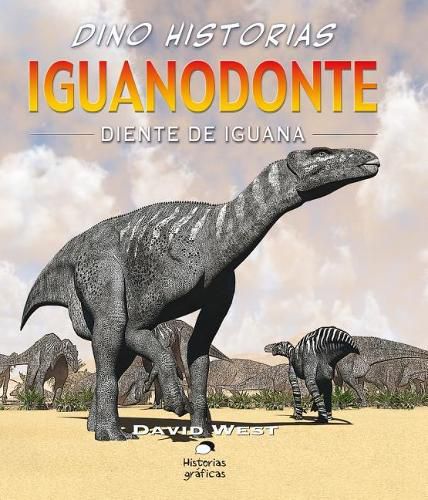Readings Newsletter
Become a Readings Member to make your shopping experience even easier.
Sign in or sign up for free!
You’re not far away from qualifying for FREE standard shipping within Australia
You’ve qualified for FREE standard shipping within Australia
The cart is loading…






This dramatic book follows a young Iguanodon who was separated from his family after a volcanic eruption. Danger and excitement meet this juvenile dinosaur at every turn as he tries to reunite with his family. Spectacular graphics and engaging text tell the story of the young Iguanodons journey. Fossil evidence and dinosaur facts accompany the story and show young readers the reality behind this thrilling narrative. Este volumen en particular trae hasta nosotros al iguanodonte, cuyo nombre quiere decir diente de iguana . Este enorme saurio vivio a comienzos del periodo Cretacico. Media diez metros de longitud y su peso era de unas cinco toneladas. Comia hierbas y su dieta probablemente consistia de cicadas y otras plantas prehistoricas. Los restos fosiles hallados en Belgica sugieren que el iguanodonte vivia en manadas. Se han encontrado restos fosiles en Alemania, Belgica, Estados Unidos, Inglaterra y el norte de Africa.
$9.00 standard shipping within Australia
FREE standard shipping within Australia for orders over $100.00
Express & International shipping calculated at checkout
This dramatic book follows a young Iguanodon who was separated from his family after a volcanic eruption. Danger and excitement meet this juvenile dinosaur at every turn as he tries to reunite with his family. Spectacular graphics and engaging text tell the story of the young Iguanodons journey. Fossil evidence and dinosaur facts accompany the story and show young readers the reality behind this thrilling narrative. Este volumen en particular trae hasta nosotros al iguanodonte, cuyo nombre quiere decir diente de iguana . Este enorme saurio vivio a comienzos del periodo Cretacico. Media diez metros de longitud y su peso era de unas cinco toneladas. Comia hierbas y su dieta probablemente consistia de cicadas y otras plantas prehistoricas. Los restos fosiles hallados en Belgica sugieren que el iguanodonte vivia en manadas. Se han encontrado restos fosiles en Alemania, Belgica, Estados Unidos, Inglaterra y el norte de Africa.